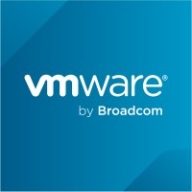

Red Hat OpenShift and VMware Tanzu Platform compete in the container management and application development category. OpenShift appears to have the upper hand with its extensive out-of-the-box functionalities, strong security features, and user-friendly interface, whereas Tanzu requires more customization and has less comprehensive features without additional components.
Features: OpenShift is recognized for its rapid CI/CD integration, robust automated scaling, and strong security features. It offers seamless Kubernetes integration and powerful management tools. Tanzu is valued for its integration capabilities with VMware’s ESX and vSAN, as well as its infrastructure tie-ins, which are appreciated by users seeking a unified solution.
Room for Improvement: OpenShift users point to challenges with its documentation and complex configurations, indicating a need for improved templates and simplified scalability solutions. They also seek enhancements in its security model. Tanzu users experience issues with restrictive third-party integration, network control, and on-premises support, urging improved pricing and flexibility.
Ease of Deployment and Customer Service: OpenShift provides effective hybrid and on-premises deployment solutions, though users express concerns about support document consistency and response times. Tanzu offers smoother initial hybrid deployments but presents challenges in lifecycle management. Despite limited on-premises support, its integration within the VMware ecosystem is appreciated.
Pricing and ROI: OpenShift's licensing is considered high but justified by strong integrations and improved resource management. Users report significant ROI from resource efficiencies. Tanzu’s pricing, often bundled with Cloud Foundry, is expensive and less attractive for startups, despite occasional competitive discounts, leading to affordability concerns for smaller enterprises.
| Product | Market Share (%) |
|---|---|
| Red Hat OpenShift | 15.8% |
| VMware Tanzu Platform | 14.7% |
| Other | 69.5% |


| Company Size | Count |
|---|---|
| Small Business | 17 |
| Midsize Enterprise | 4 |
| Large Enterprise | 40 |
| Company Size | Count |
|---|---|
| Small Business | 10 |
| Midsize Enterprise | 3 |
| Large Enterprise | 10 |
Red Hat OpenShift offers a robust, scalable platform with strong security and automation, suitable for container orchestration, application deployment, and microservices architecture.
Designed to modernize applications by transitioning from legacy systems to cloud-native environments, Red Hat OpenShift provides powerful CI/CD integration and Kubernetes compatibility. Its security features, multi-cloud support, and source-to-image functionality enhance deployment flexibility. While the GUI offers user-friendly navigation, users benefit from its cloud-agnostic nature and efficient lifecycle management. However, improvements are needed in documentation, configuration complexity, and integration with third-party platforms. Pricing and high resource demands can also be challenging for wider adoption.
What are the key features of Red Hat OpenShift?Red Hat OpenShift is strategically implemented for diverse industries focusing on container orchestration and application modernization. Organizations leverage it for migrating applications to cloud-native environments and managing CI/CD pipelines. Its functionality facilitates efficient resource management and microservices architecture adoption, supporting enterprise-level DevOps practices. Users employ it across cloud and on-premises platforms to drive performance improvements.
VMware Tanzu Platform is designed for cloud-native development and management of Kubernetes, CI/CD processes, microservices, and containerized workloads. It supports deployments both on cloud and on-premises, providing centralized management via Mission Control.
VMware Tanzu Platform offers seamless integration with vSphere, ESX, and vSAN, supporting centralized cluster management and lifecycle management. The platform provides a GUI for monitoring CI/CD pipelines and network policies, enhancing multi-tenancy and Day 2 operations. Users can easily manage Kubernetes clusters, monitor applications, and integrate with tools such as GitHub, GitLab, Cloud Foundry, and Azure. It ensures compliance and security for service providers, financial institutions, and businesses.
What are the key features of VMware Tanzu Platform?
What benefits and ROI should users look for in VMware Tanzu Platform reviews?
Industries such as financial institutions, service providers, and businesses requiring rigorous compliance and security deploy VMware Tanzu Platform. These entities benefit from centralized management, streamlined DevOps processes, and integrated tools, enhancing their capabilities in cloud-native developments and containerized workloads.
We monitor all Agile and DevOps Services reviews to prevent fraudulent reviews and keep review quality high. We do not post reviews by company employees or direct competitors. We validate each review for authenticity via cross-reference with LinkedIn, and personal follow-up with the reviewer when necessary.